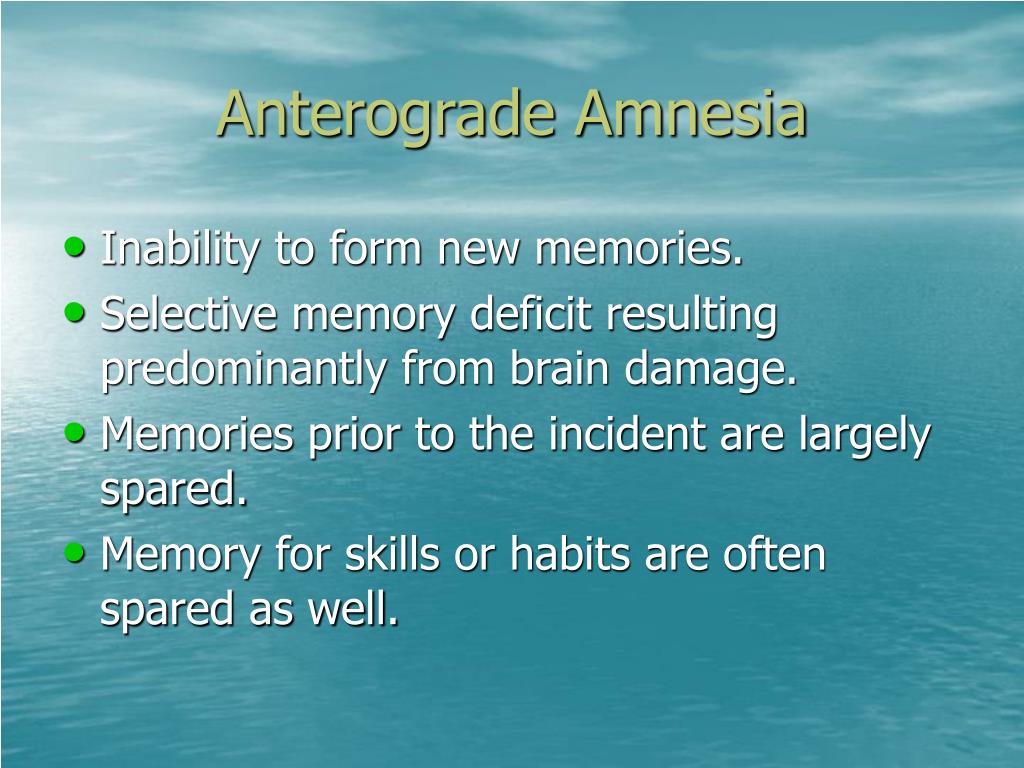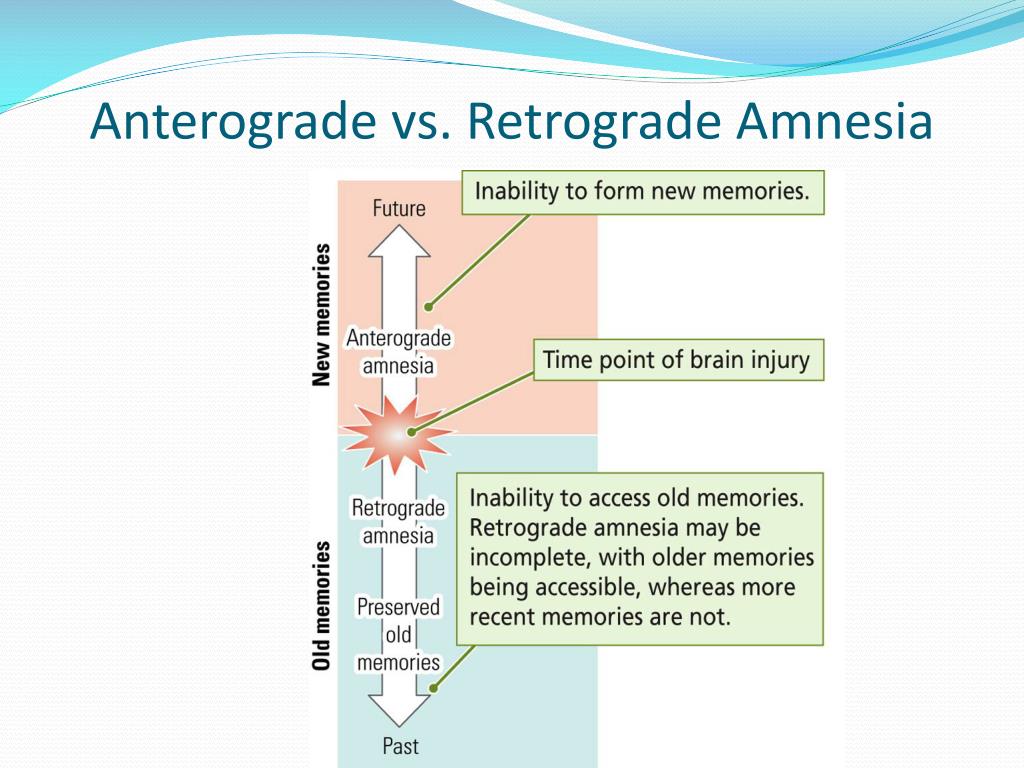

In fact, out of the 503 cases exhibiting AA of one day or less, 32 had no RA at all. Interestingly, when AA covered one day or less, only a small number of cases (N=19) exhibited substantial RA ( Russell & Nathan, 1946 Table 4a). As the duration of AA increased, the number of cases exhibiting pronounced RA also increased. We take the duration of AA to be indicated by the time after injury when post-traumatic amnesia resolves. RA was assessed informally, usually by querying about autobiographical information.

Figure 1 shows the relationship between the duration of post-traumatic amnesia and the extent of RA for 972 cases. The most comprehensive study of the relationship between AA and RA was carried out in more than 1000 patients who had sustained closed head injury ( Russell & Nathan, 1946). Detailed neuroanatomical information should clarify the relationship between AA and RA. These examples illustrate variations in the expression of AA and RA, which presumably depend on the locus and extent of brain injury or disease. Moreover, AA can sometimes occur in the absence of RA ( Corkin, Hurt, Twitchell, Franklin, & Yin, 1987 Russell & Nathan, 1946). Yet it is also true that RA can sometimes appear disproportionately severe in comparison to AA ( Barr, Goldberg, Wasserstein, & Novelly, 1990 Bright et al., 2006 Hornberger et al., 2010 Kapur, Ellison, Smith, McLellan, & Burrows, 1992 Milton et al., 2010 O'Connor, Butters, Miliotis, Eslinger, & Cermak, 1992 Reed & Squire, 1998 Sehm et al., 2011). In addition, the severity of AA is usually correlated with the severity of RA ( Kopelman, 1989 Squire & Alvarez, 1995 Wickelgren, 1979). It has long been recognized that AA and RA tend to occur together in the same patients ( Barbizet, 1970 Rose & Symonds, 1960 Russell, 1971 Victor, 1969). Retrograde amnesia (RA) refers to the loss of information that was acquired before the onset of amnesia. Anterograde amnesia (AA) refers to an impaired capacity for new learning. The phenomena of anterograde and retrograde amnesia have been described in the laboratory and clinic for more than 100 years ( Ribot, 1881) and have been an important source of information about the structure and organization of memory. Whenever patients deviate substantially from the relationship described here, one should be alert to the likelihood that significant damage has occurred outside or in addition to the structures in the medial temporal lobe. This relationship between AA and RA in patients with identified medial temporal lobe lesions appears to describe a general principle, which applies to a range of etiologies, including traumatic amnesia, where the locus and extent of brain damage is less well understood. In addition, RA was measurable only after AA reached a substantial level of severity. The findings describe an orderly relationship between AA and RA, such that patients with more severe AA also had more extensive RA.

We have quantified the severity of AA and RA for factual information in 11 memory-impaired patients with bilateral medial temporal lobe lesions, including 5 for whom detailed post-mortem neurohistological information was available.

The relationship between AA and RA has rarely been described quantitatively in groups of patients where detailed anatomical information is available. Nevertheless, variations in the expression of AA and RA have been reported, which presumably reflect variation in the locus and extent of brain damage. The severity of AA is usually correlated with the severity of RA. The study of anterograde and retrograde amnesia (AA and RA) in the laboratory and the clinic has provided important information about the structure and organization of memory.


 0 kommentar(er)
0 kommentar(er)
